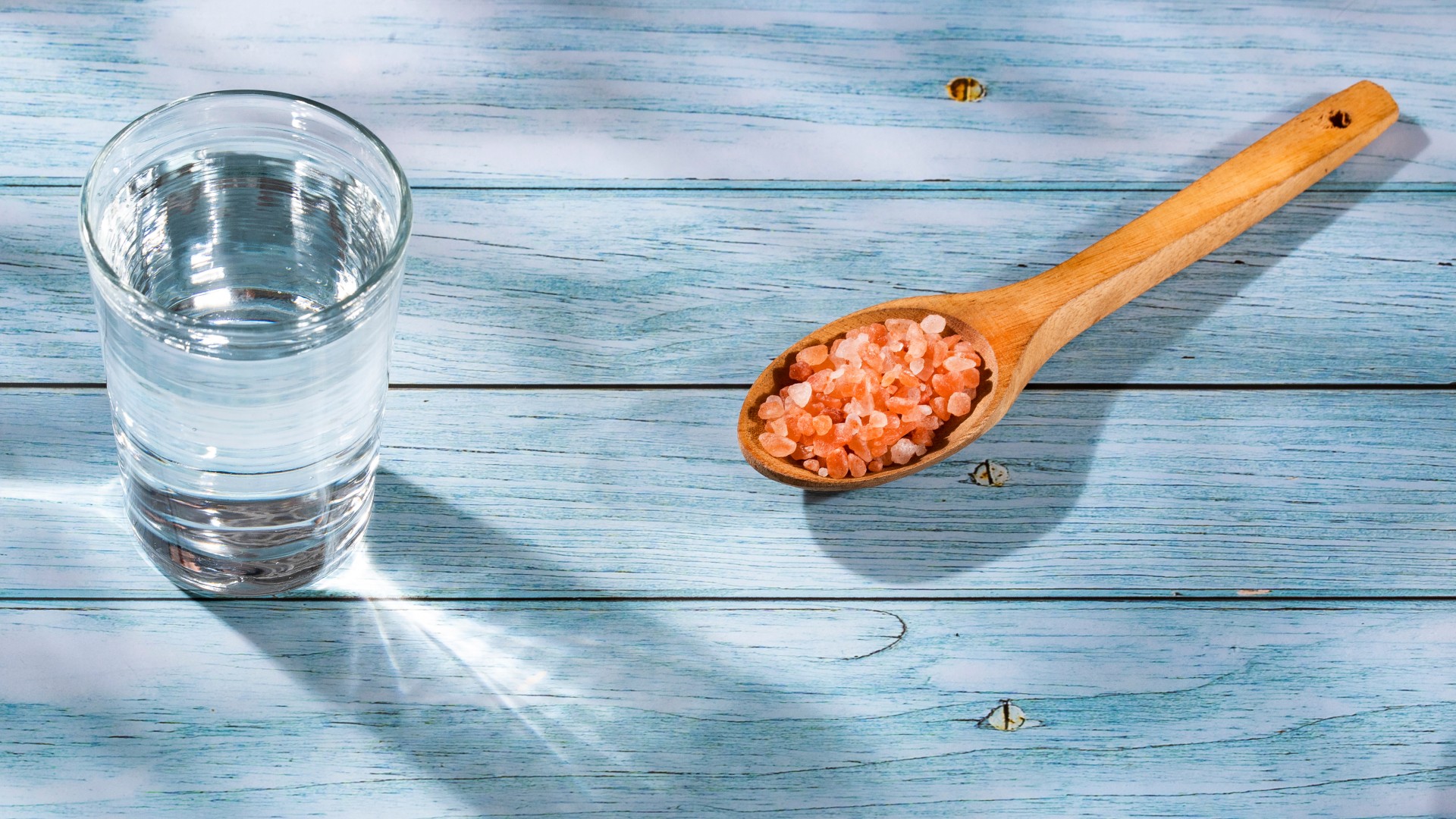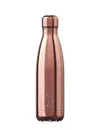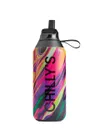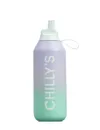
It’s not just a TikTok trend, everyone. Naturally, though, TikTok has picked it up and sent the #saltwater trend skyrocketing. People have been adding salt to their water for decades, and there are reported benefits, like boosting hydration and restoring lost minerals in the body.
I exercise roughly five times a week, enjoying activities like hot yoga and CrossFit, which means I sweat — a lot. Sweating can cause dehydration if those lost electrolytes aren’t replenished, and I’ve heard that adding a pinch of salt to your tap water could do the trick.
Curious, I did some digging into the existing research. I also spoke with two registered nutritionists to see if there’s anything to the salt water trend and what the potential health benefits include. Here’s what has happened so far.
What is the salt water trend?
Simply put, it involves adding a pinch of salt to your water to promote water absorption and prevent dehydration, similar to how electrolyte tablets or drinks work.
“Adding salt to water, a practice often referred to as “electrolyte water” is becoming increasingly popular,” says Elena Rolt, a registered nutritional therapist and certified functional medicine practitioner at Health Miro.

“Salt helps with rehydration and maintaining electrolyte balance,” Rolt explains. “Salt contains two key electrolyte minerals — sodium and chloride — that aid in fluid retention by the cells rather than being rapidly excreted by the body. This can be especially beneficial after sweating, whether from exercise, sauna, or illness, as it helps replenish lost electrolytes and prevent dehydration.”
According to Rolt, sodium and chloride are the most abundant electrolytes in the body, helping to maintain fluid balance, regulate blood pressure and aid in nerve signaling. Drinking water with a pinch of salt could even reduce muscle cramps, especially after intense physical activities.
“Chloride found in salt may stimulate the production of hydrochloric acid, promoting better digestion and nutrient absorption,” Rolt adds. “Some people also report an energy boost from electrolyte water, as the sodium helps regulate blood pressure, nerve and muscle function, reducing fatigue.”
I love boosting energy and hydration levels with an electrolyte tablet or drink, especially before a Hyrox competition or intense CrossFit class. After hot yoga, I can be immediately found guzzling cold water as I recover from the heat. I also see many runners, especially long-distance ones, topping up with isotonic gels and drinks. Could I save a whole lot of money by adding a pinch of salt to my water instead?
Here’s what happened and what I learned when I tried it for two weeks.
1. The type of salt you use matters, as well as how much and how often you use it
I grabbed one of the best water bottles, opened my laptop, and got to work learning what salt I should use, how much and how often. After all, I’ve had it drummed into me that I should limit the amount of salt I put into my body. The research consistently shows excessive sodium consumption is linked with an increased risk of cardiovascular disease and stroke.
Rolt tells me: “When it comes to how much salt to add, it is best to start with a small amount…a small pinch of salt or around ¼ of a teaspoon per one liter of water.” That’s really to assess how your body reacts; then, you can adjust to suit your preference. Interestingly, Rolt says you shouldn’t be able to taste it. If you can, you’re probably using too much. Noted.
As for the type of salt, Rolt advises unrefined sea salt like Maldon salt or Himalayan pink salt, as these contain a “wider range” of electrolytes like magnesium, calcium and potassium, plus trace minerals like manganese, selenium, zinc and copper. Refined table salt only contains sodium and chloride, lacking other minerals lost during the refining process.
And as for how often, Rolt says adding unrefined salt to your water should be done “strategically,” such as after intense physical activity, sauna sessions, time spent in hot climates, or periods of illness. While she doesn’t mention alcohol intake, it could also help replenish lost fluids during a nasty hangover (I’ve definitely turned to an electrolyte drink with a sore head on more than one occasion!)
2. I peed less (yes, really)
I drink a lot of water and find myself peeing often. I’ve been told by my doctor (on several occasions) that I might not be absorbing fluids properly, given that I’m also thirsty even after a drink. Plus, I’m neither diabetic nor pre-diabetic — and increased thirst can be a symptom of this.
After two weeks of monitoring my trips to the toilet and how I felt each day, I noticed I needed to pee less often, which surprised me. To be honest, I wasn’t expecting to feel any different. Could I really be retaining water better?
However, Jennie Norton, registered dietician nutritionist at Vegan Wins, says adding salt to water every day isn’t always necessary.
“Most people get plenty of sodium from food, and drinking salted water when you don’t need it won’t do you any favors,” she warns. “Too much sodium over time is linked to high blood pressure and heart issues, and in the short term, it can cause bloating and fluid retention. If you overdo it, it can even make dehydration worse by pulling water out of your cells instead of helping you retain it.”
Instead, Norton recommends adding a little salt to water if you’re losing electrolytes in specific situations, like recovering from a stomach bug or periods of dehydration, but not every day. “It might be better to focus on water-rich foods or plain filtered water for hydration,” she adds.
Given this is just an experiment, I’ll probably limit adding salt to water to exercise-heavy days or when I’m feeling a little dehydrated. Or hungover, let's face it.
Rolt says adding unrefined salt to your water should be done “strategically.”
3. I learned more about the risks
As a qualified coach, I know that excessive salt intake isn’t good for your diet or health (no more than 6g per day), but I wanted to know if adding a pinch of salt to my water regularly (given I already felt it had been helping me retain water) could be harmful.
“If your diet already contains a lot of salt…adding more to your water is not advisable,” Norton tells me. “Individuals with high blood pressure, kidney issues, or heart disease should consult a healthcare professional before incorporating any salt.”
I’ve learned the general consensus is that drinking enough water — the daily recommended intake is roughly 2-2.5 liters or 8 glasses — should be enough to keep you functioning. Plus, eating a diet rich in whole foods, fruits, veggies and whole grains that contain potassium and magnesium.
“If you’ve been sweating a lot or recovering from an illness, something like coconut water or a simple homemade electrolyte drink with a little citrus and a tiny pinch of salt can help replenish what you’ve lost,” adds Norton. If you struggle to retain fluids, checking with a medical professional for a wider health concern could also be useful to rule out any underlying condition.
Is it good to add salt to your water?
I’m pretty on top of my diet. I cook from scratch on most days, eat plenty of fruit and veggies and ensure my water bottle is regularly topped up and by my side. Given that I’m not diabetic but still struggle to retain fluids, I’ll be adding a pinch of salt to my water here and there, and I believe it's helping me feel more hydrated and less thirsty day to day.
However, I plan to prioritize a pinch of salt on days when I know I’ll be hitting the gym hard rather than making it a daily practice.
During this experiment, I found it interesting that you can provide the body with necessary minerals (electrolytes like sodium, magnesium and potassium) to retain and absorb the water you drink throughout the day.
Without them, you might drink enough fluids but without retaining the nutrients you need. That doesn't mean you need to add salt to your water every day, but a little could help if you don't sit in a higher-risk health category.
Looking for other ways to boost hydration? We’ve tried some other trends below. Here’s what we thought of them.

Elena is a registered nutritional therapist and certified functional medicine practitioner at Health Miro.

Jennie is a registered dietitian nutritionist at Vegan Wins where she provides dietary counseling services for US and UK audiences. She has almost 20 years of experience in leadership roles supporting high-performing teams in grocery retail stores and the child nutrition school foods department.
More from Tom's Guide
- I drank apple cider vinegar every day for 10 days like Victoria Beckham, here's what happened to my body
- I drank one gallon of water a day for a month, here's what happened
- I took creatine every day for 12 days like Mark Wahlberg, here's what happened to my body.
Sign up to get the BEST of Tom's Guide direct to your inbox.
Get instant access to breaking news, the hottest reviews, great deals and helpful tips.

Sam Hopes is a level 3 qualified trainer, level 2 reiki practitioner and senior fitness writer at Tom's Guide. She is also currently undertaking her Yoga For Athletes training course. Sam has written for various fitness brands and websites over the years and has experience across brands at Future such as Live Science, Fit&Well, Coach, and T3.
Having worked with fitness studios like F45 and Virgin Active, Sam now primarily teaches outdoor bootcamps, bodyweight, calisthenics and kettlebells. She also coaches mobility and stretching-focused classes several times a week and believes that true strength comes from a holistic approach to training your body.
Sam has completed two mixed doubles Hyrox competitions in London and the Netherlands and finished her first doubles attempt in 1:11.
You must confirm your public display name before commenting
Please logout and then login again, you will then be prompted to enter your display name.





